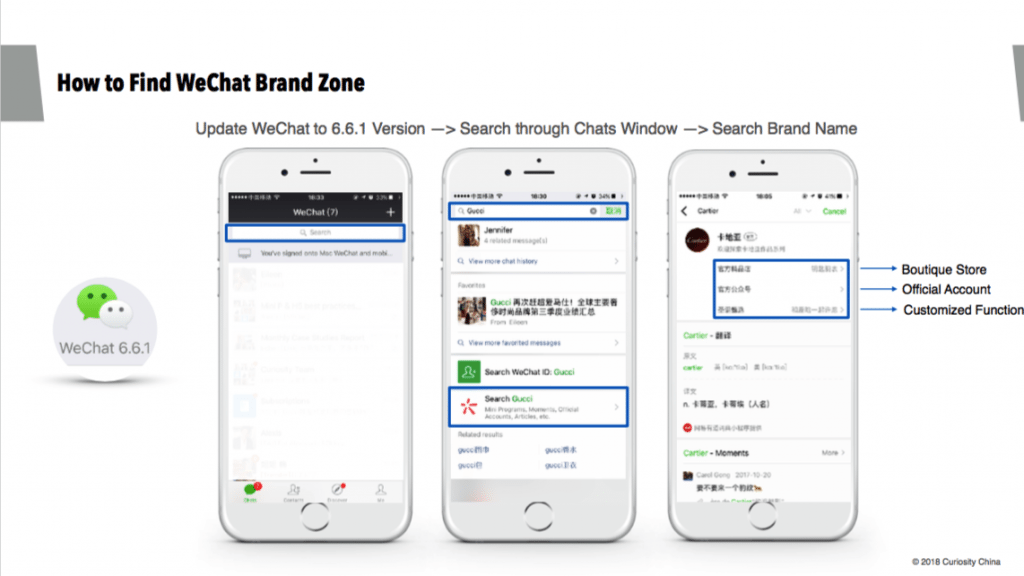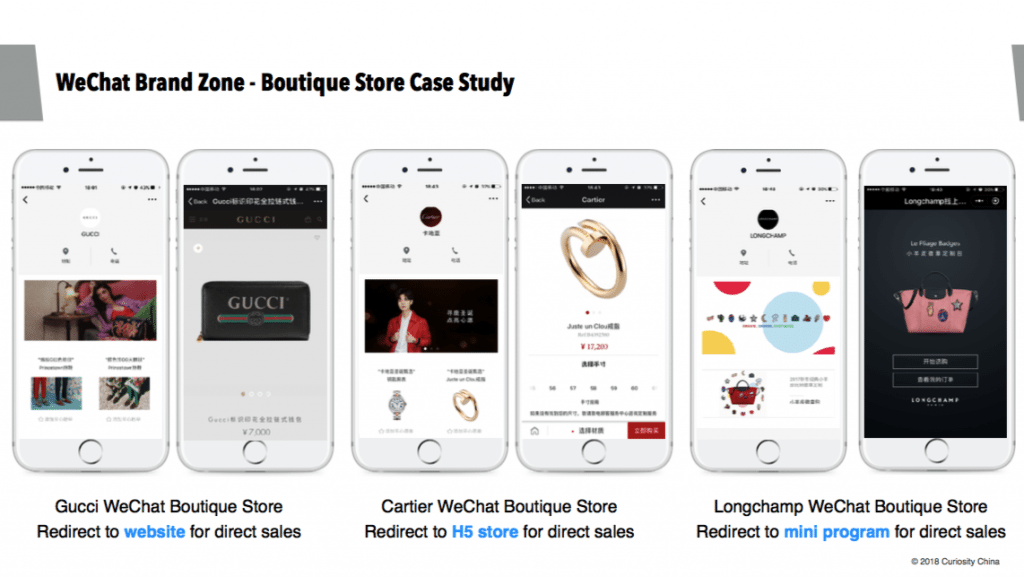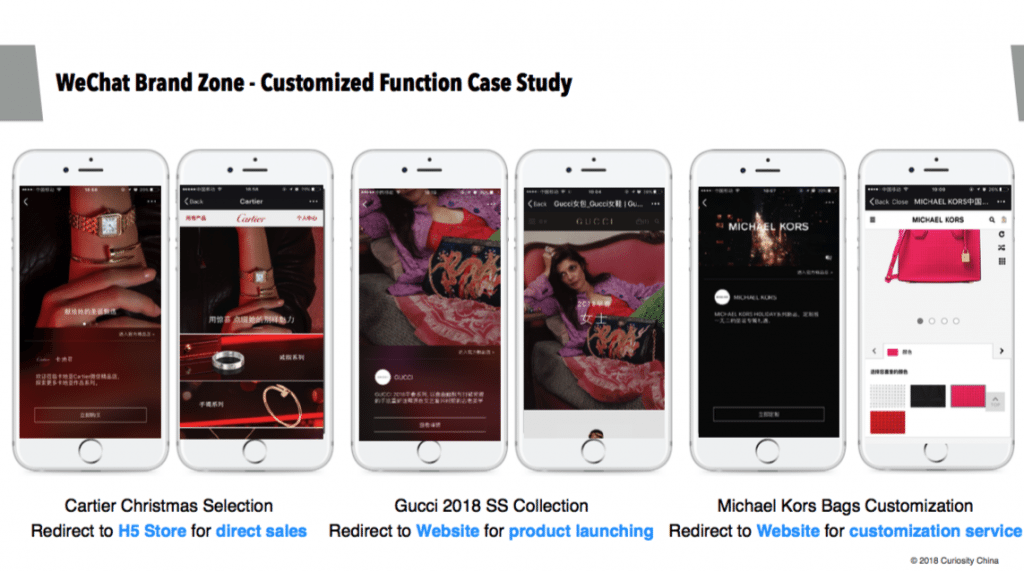WeChat  has made a fundamental change to the way it works.
has made a fundamental change to the way it works.
China’s most popular social media app has always limited its posts’ visibility to the sharer’s friends, or an official account’s followers. While this closed ecosystem limits the potential for content to go viral, it has been an asset for the app’s parent company, Tencent, and for users, who have been able to share more sensitive content among smaller groups without incurring the wrath of the government.
During the rollout of version 6.6.1 last December, however, WeChat quietly launched a new feature named brand zone, which allows brands to display their official WeChat accounts, boutique stores, and other customized content to users who don’t subscribe to their content. Instead, users can search directly for the brands they want to visit.
The new feature signals Tencent’s ambition to make WeChat an all-encompassing digital platform, connecting social media marketing, e-commerce, and payments.
According to the China-based digital marketing agency CuriosityChina, the new brand zone gathers all of a brand’s activity on WeChat in one place.
So far, a dozen major international brands have already utilized this new feature, with more than half of them being luxury and premium brands. Early adopters include Cartier, Gucci, Tiffany, Louis Vuitton, Longchamp, Michael Kors, Swarovski, Montblanc, and Lancôme.

On December 21, the official WeChat account of the American affordable luxury label Michael Kors, for example, released a post introducing the brand zone feature to followers. At the time this article was written, the post was viewed more than 14,000 times.
“This new function will allow brands to conduct flexible traffic control within the brand zone as it could be redirected from one section to another. [It is] also a good first step to a traffic monetization,” said Alexis Bonhomme, the co-founder and general manager of CuriosityChina.
A deep analysis of how each brand is utilizing this new feature shows different approaches to leverage and monetize the boutique store function.

The Italian luxury powerhouse Gucci, for example, redirects consumers who land on the boutique store to its official Chinese e-commerce website, which was launched last July. So does Louis Vuitton, who also opened the first Chinese direct-to-sales website last year.
The prestige jewelry brand Cartier, on the other hand, has decided to redirect the traffic to its HTML5 (built-in web browser) WeChat stores to generate direct sales. And French fashion label Longchamp has linked the boutique store back to its mini program, which allows consumers to customize and purchase their signature handbags.
Similarly, the use of the customized section under the brand zone differs from brand to brand. Cartier once again directs traffic to its WeChat web browser stores, while Gucci sends consumers to its website to view new products, and Michael Kors gives visitors the option of customizing a handbag.

The launch of the brand zone on WeChat is a breakthrough move that greatly strengthens the ability of the app to assist brands’ sales. The arrival of high-end luxury players including Gucci and Louis Vuitton, who have long refrained from working directly with the domestic e-commerce sites like Alibaba and JD.com, further showcases the competitiveness of the retail ecosystem that Tencent has been building.
That media and individuals don’t have the same ability to broadcast to non-followers gives some indication of the direction China is heading in 2018.
Source: Campaign Asia

You must be logged in to post a comment Login